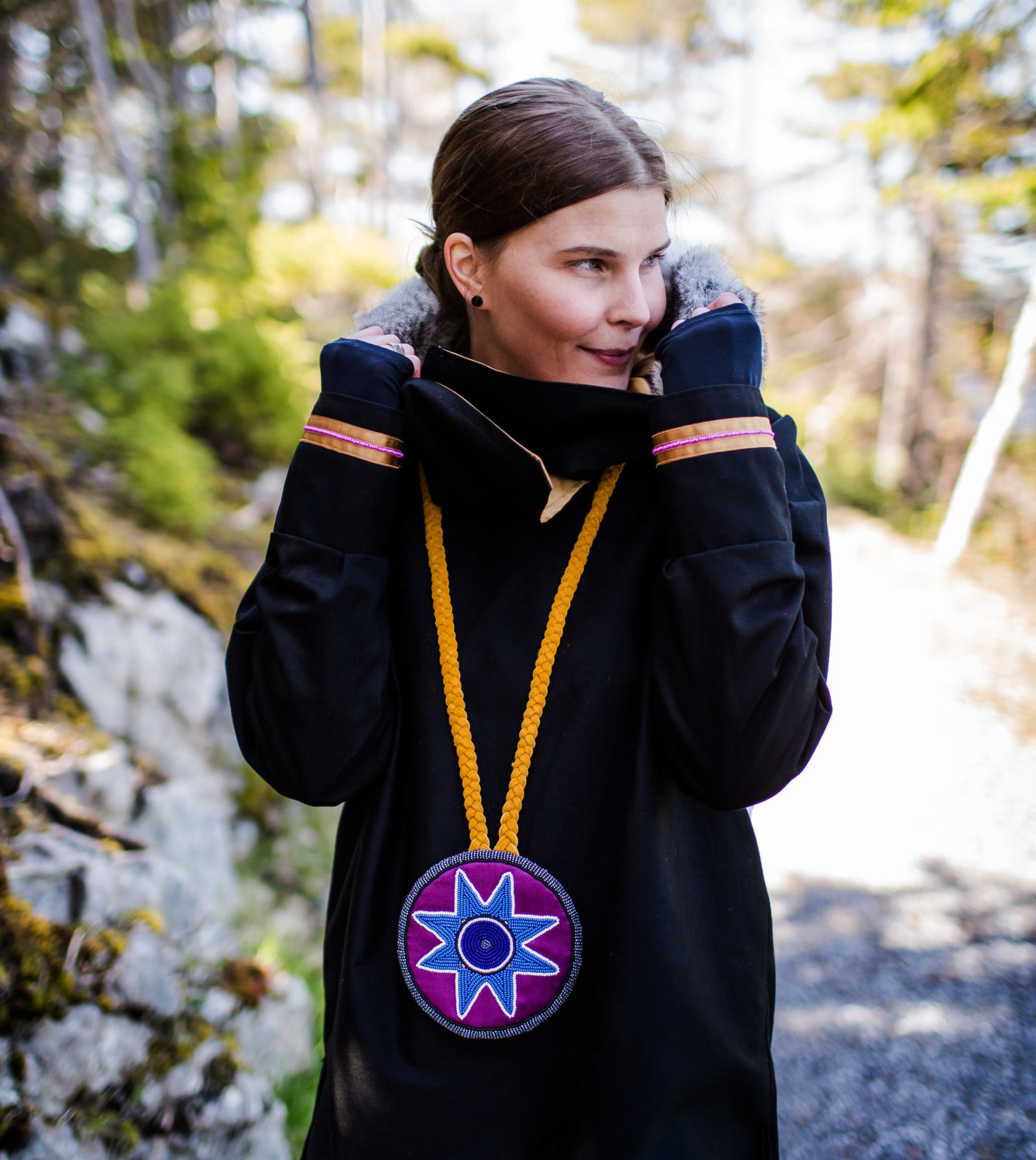Interrelation: Ekpahak, 2018, Photo Documentation, Land-based durational performance braiding purple flagging tape tied around a tree on unceded Wolastoqey Territory in collaboration with singer Glenn Bernard, 12.5”x8.5”. Copyright Meagan Musseau, photo credit Connexion Artist-Run Centre.
She travels to Wolastoqkuk, of the Intergalactic L’nu Basket series, 2018. Black ash splints, flagging tape, and vinyl, 3.75”x3.75”x10”. Copyright Meagan Musseau, photo credit Meagan Musseau.

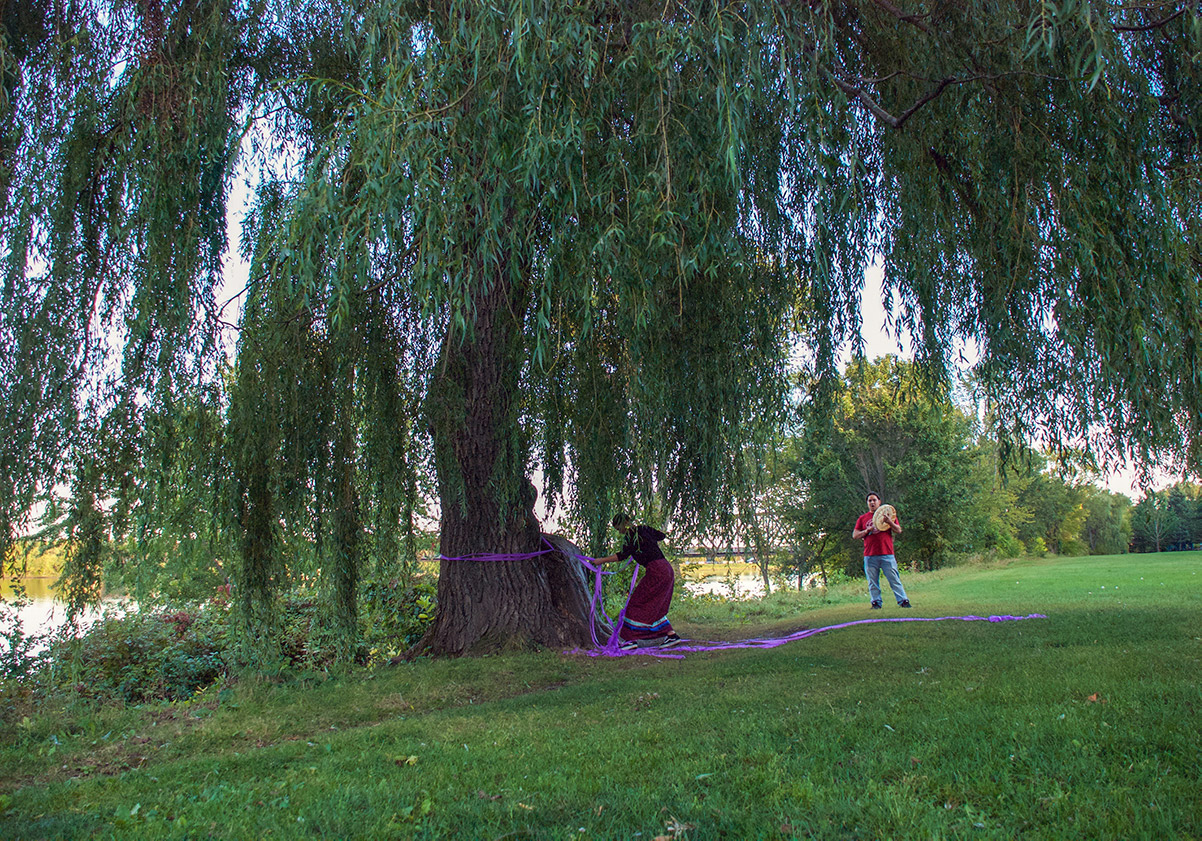

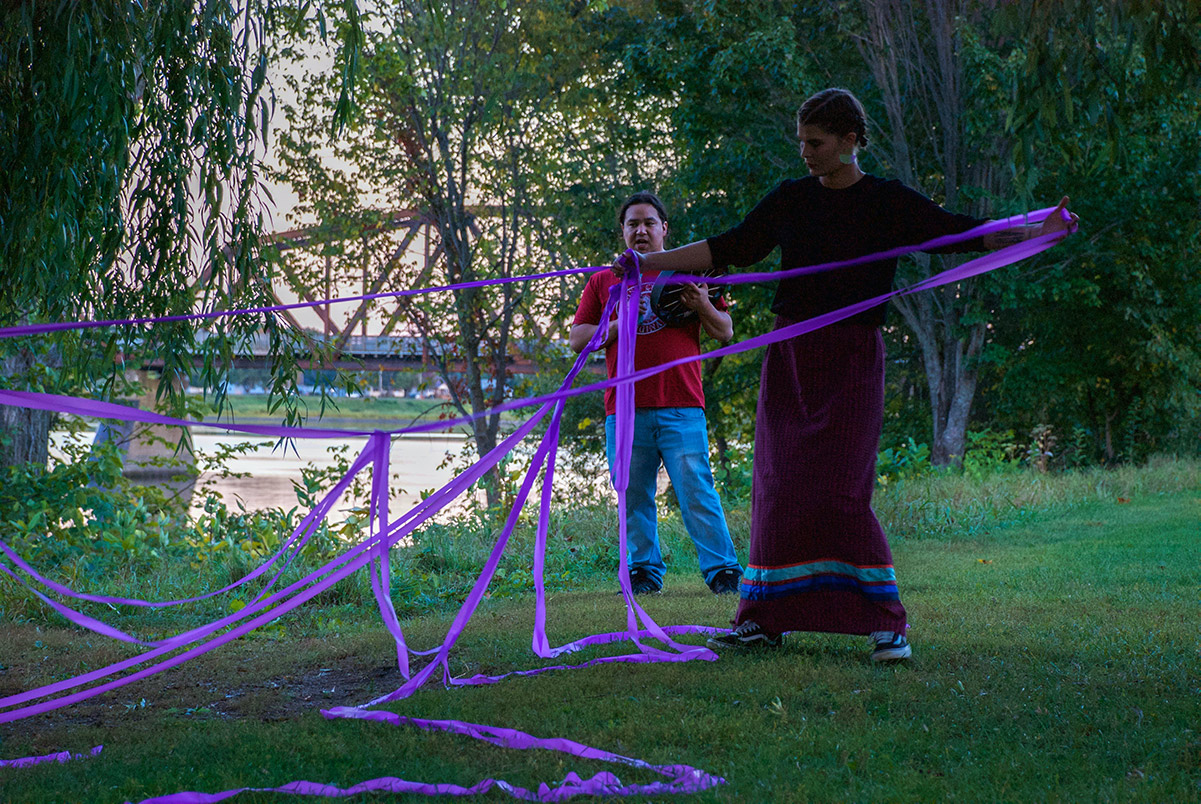
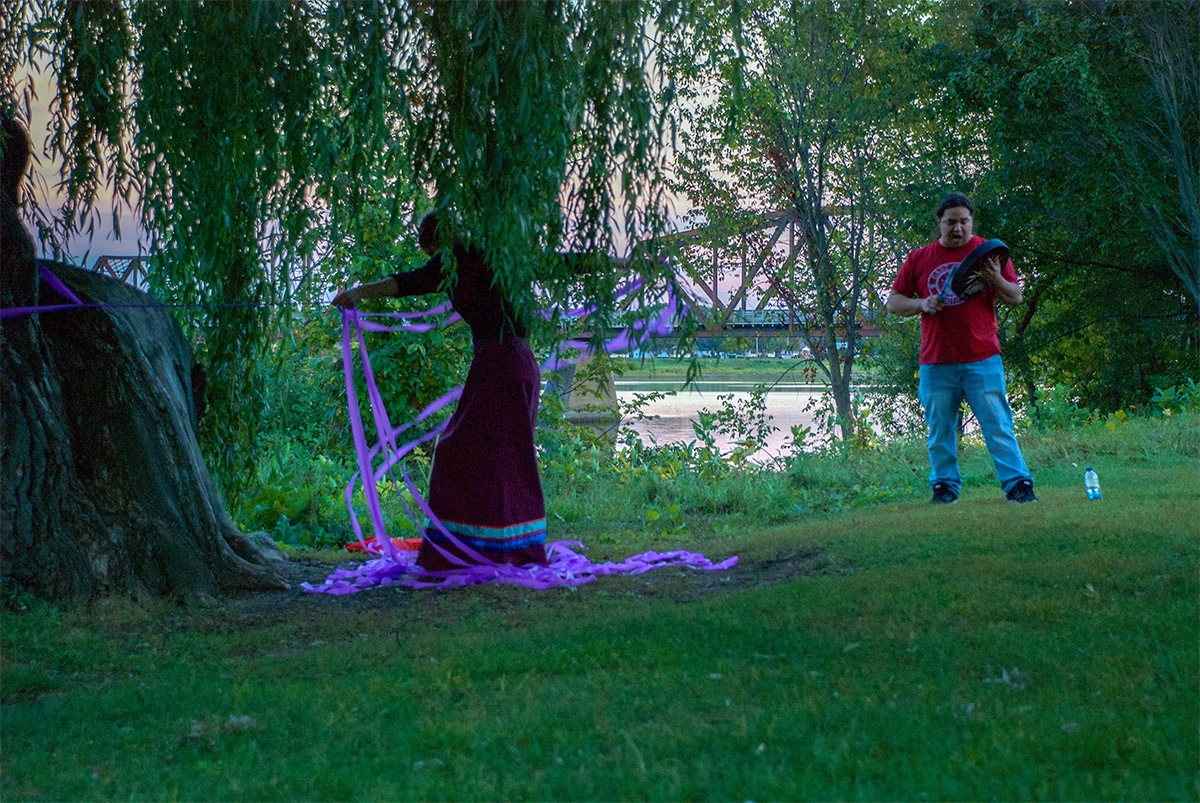
Essay by Emma Hassencahl-Perley
It would be the first time that I got to meet Meagan Musseau in person, though I have followed her interdisciplinary art practice for years via social media. Musseau is Mi’kmaq originally from Elmastukek (Bay of Islands, Western Newfoundland). I looked forward to connecting with her to learn more about her extensive practice and her experience in the Atlantic Emerging Artist (AEA) residency at Banff Centre for the Arts, then she asked me to write this essay on her work Interrelation: Ekpahak created during the LAND/MARK residency at Connextion Artist-Run Centre (ARC) in September 2018.
The residency’s’ aim was to create collaborative, site-responsive work on the theme of decolonization. Musseau applied with her previous work made in 2017 at the Banff Centre for the Arts on Sacred Buffalo Mountain in Treaty 7 Territory, “and when they poison the bogs, we will still braid sweetgrass” – a durational performance where the artist braids seven-metre strands of orange flagging tape around a tree on Sacred Buffalo Mountain. In the documentation video, Musseau braids the strands until reaching the end of the tape and the work is accompanied by an installation of the finished flagging tape braid alongside her aunt’s seal skin boots, “I would go into the LAND/MARK residency with that work in mind and create a new piece that is responsive to territory and open to a collaborator.”
Connextion ARC, in partnership with the Indigenous Visual Arts Program (IVA) at the New Brunswick College of Craft and Design, provided Musseau with studio space for the duration of the two-week residency. In the first week, Musseau worked alongside students in the IVA program and focused on material exploration through basket making. She completed [title of work] using black ash splints, pink synthetic vinyl, and purple flagging tape. In a zoom interview, the artist states, “That material [flagging tape] comes with its own language for surveying land, making trails, or just marking sites.” Flagging tape is a familiar material used in Musseau’s practice and relates to resource extraction that happens frequently in her homelands, specifically through lumber companies. [fact check] The LAND/MARK residency allows Meagan to continue this material exploration using synthetic vinyl and brightly coloured flagging tape, also used in her work AEA residency in Material Harvesting as well as her Intergalactic L’nu Baskets series. The artist uses these store-bought materials to comment on her access to traditional materials, such as black ash for basket weaving.
This exploration reminds me of Wolastoqey basket maker Charles Solomon and his venetian-blind basket series. I am interested in the ways that artists are using easily accessible or recycled materials to mimic those -for lack of a better word- “traditional” materials originally used in Indigenous art forms. The resiliency of Indigenous artists translates through materiality because I think that in most instances, regardless of our in access or lack of time to collect original materials, Indigenous artists will always find a way to create new and meaningful work within their communities. If there is no more access to black ash in the future, I am confident that artists will not let that stop them from creating baskets and other wood crafts.
During the second week of the LAND/MARK residency, Connextion ARC put Musseau in touch with Wolastoqey drummer and chanter, Glenn Bernard. On the last night of Musseau’s LAND/MARK residency, the artist prepares to perform her work for Interrelation: Ekpahak on the brink of the Wolastoq river in so-called downtown Fredericton, an iteration of her previous work at the Banff Centre. Interrelation: Ekpahak is a site-specific, multilayered acknowledgment of space through memory and ceremony. The work serves as an offering and point of engagement with the homelands that she is visiting. The flagging tape acts as an umbilical cord – on one end, the braid is attached to the tree that is rooted in the landscape, and the other end, the pieces of tape are wrapped around the artist’s fingers. The braid symbolizes Indigenous Peoples’ relationship to the land in a heartfelt, spiritual sense. Braiding is a ceremonial act among many Indigenous nations where each strand represents the connection between mind, body, and spirit.
Musseau begins by wrapping 7m strands of fluorescent, purple flagging tape around a tree next to the Wolastoq river – a prominent body of water deeply rooted in the identity of the Wolastoqiyik. The artist is a visitor to Wolastokuk (the homelands/territory) and is self-aware of her own artistic extraction throughout her stay. As a counteraction, she gives this work as an offering to place by incorporating the sounds of the people that have inhabited the land for millennia. Musseau stays concentrated on the task at hand, weaving the strands of tape over and under, and within just a few feet at a time, she must untangle them as well. It is vital to plan for interruptions, the physical labor and exhaust can quickly become frustrating and taxing.
In the same Zoom interview, I asked Musseau what the difference was between Interrelation: Ekpahak and her work, “and when they poison the bogs, we will still braid sweetgrass”. She reflected on what the experience felt like on Sacred Buffalo Mountain in Banff, braiding flagging tape around a tree, she said, “I got halfway through, and I thought: ‘Where’s the drum? I need the heartbeat. We need the songs from the territory that the work is in connection with'”. In the performance documentation, Musseau is visibly struggling to untangle strands behind her to continue the braid. In when they poison the bogs we will still braid sweetgrass, it was the artist, the cameraman, and 2-3 visitors for the duration of this performance.
This time, with help from her collaborator Glenn, the sound of the drum (symbolizing the heartbeat of Mother Earth) keeps Musseau centered in her movements as well as feeling the energy radiating off of the crowd of people that is gathering behind her on the grass next to the river. Glenn sang the Wolastoq Song, the Mi’kmaq Honour Song, among others. It takes Musseau nearly two hours to complete the braid of flagging tape. She is tired and the crowd has started to disperse after the sunset. When Musseau is finished, she realizes that she is in pitch-darkness under the stars. Musseau feels a special connection to Wolastokuk and it has remained an important meeting place for her in her travels for work. She recalls feeling humbled by this experience and gives thanks to the territory for all it has given her.
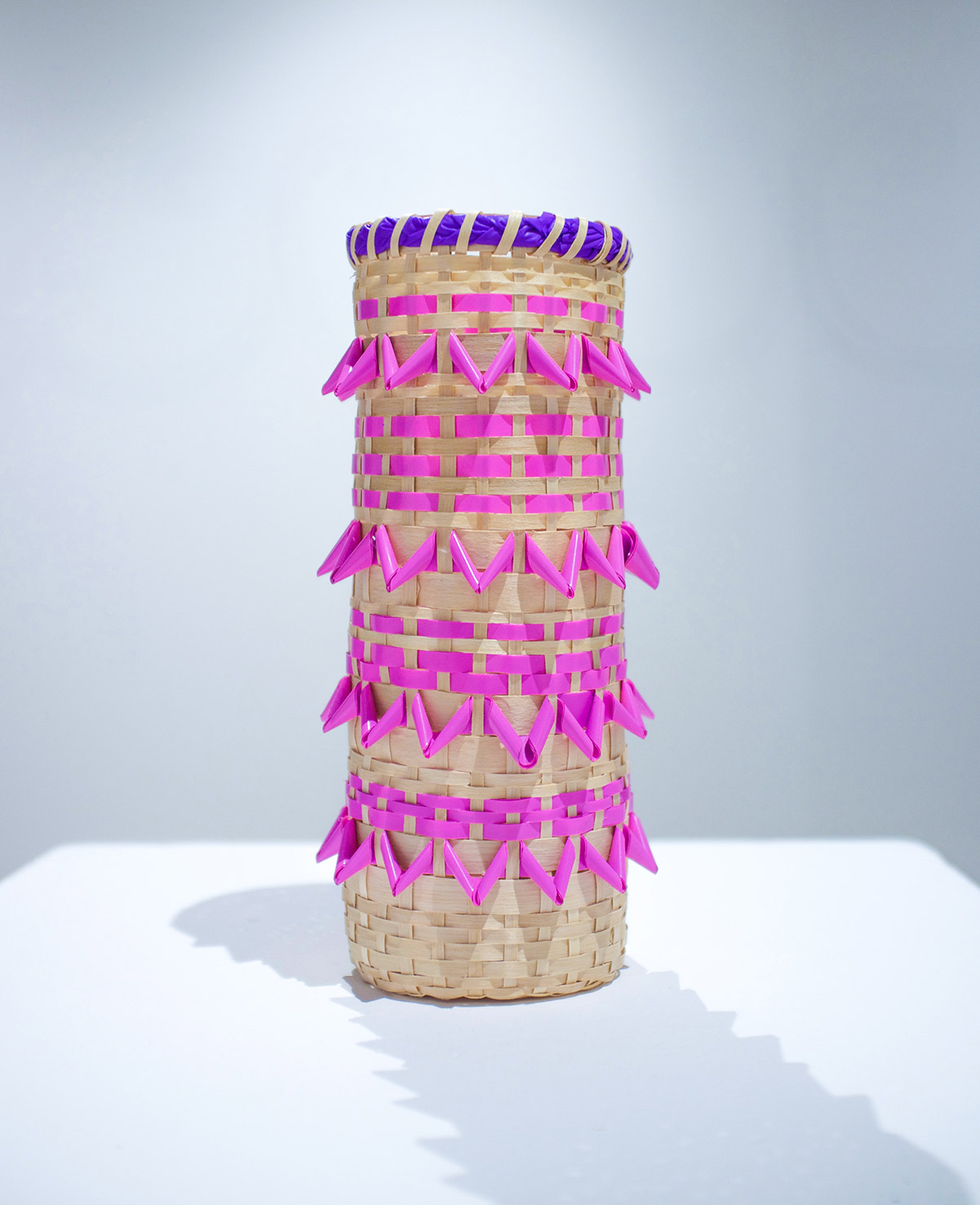
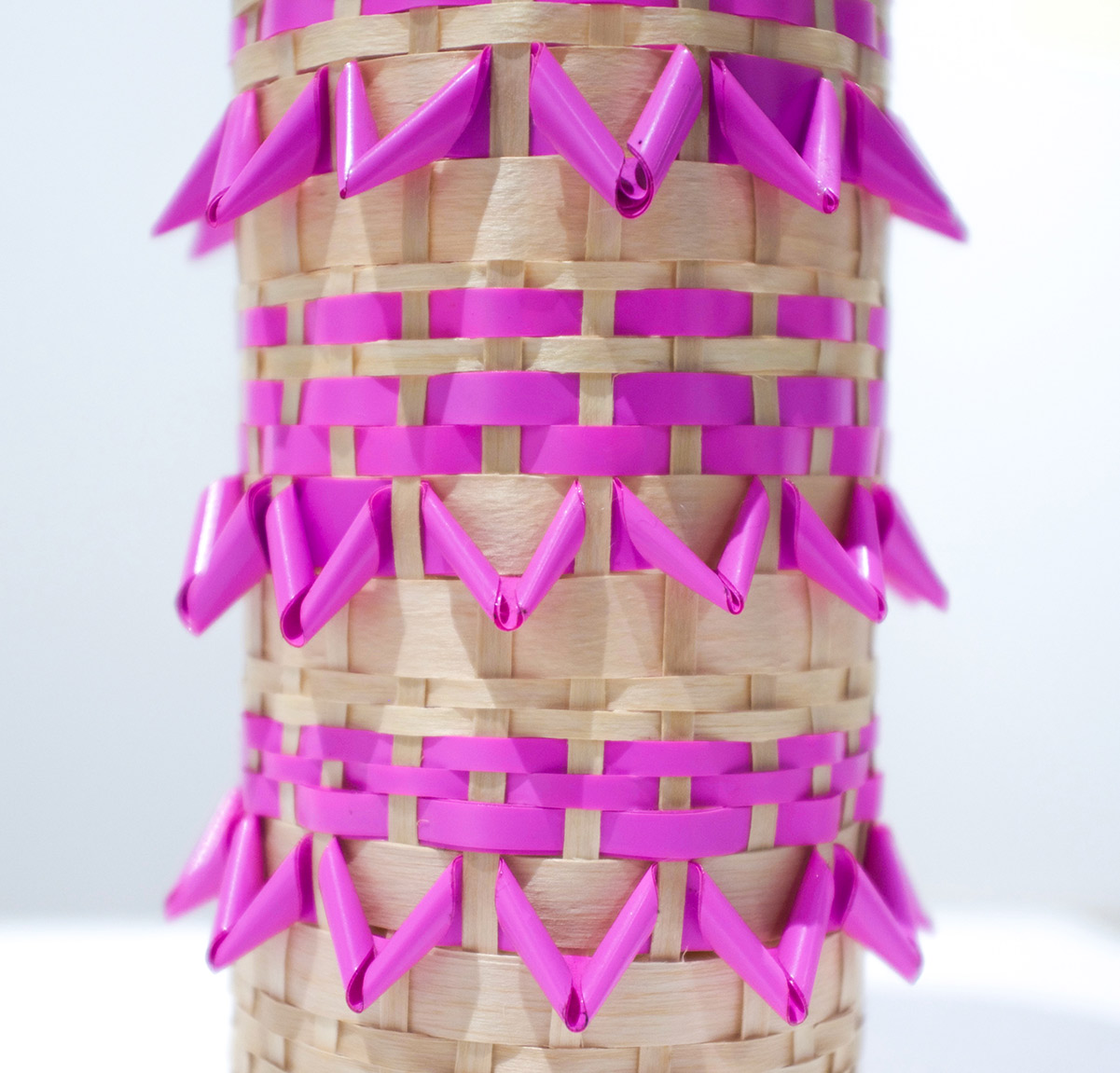
About the Artists
Megan Musseau
Meagan Musseau is a L’nu (Mi’kmaw) artist from Elmastukwek, Ktaqmkuk territory (Bay of Islands, western Newfoundland). She nourishes an interdisciplinary arts practice by working with cust...
Glenn Bernard
Glenn has been singing since he was just a young boy still learning to talk. Glenn has travelled throughout eastern Canada and the United States going to gatherings and sharing his music. Glenn has...
